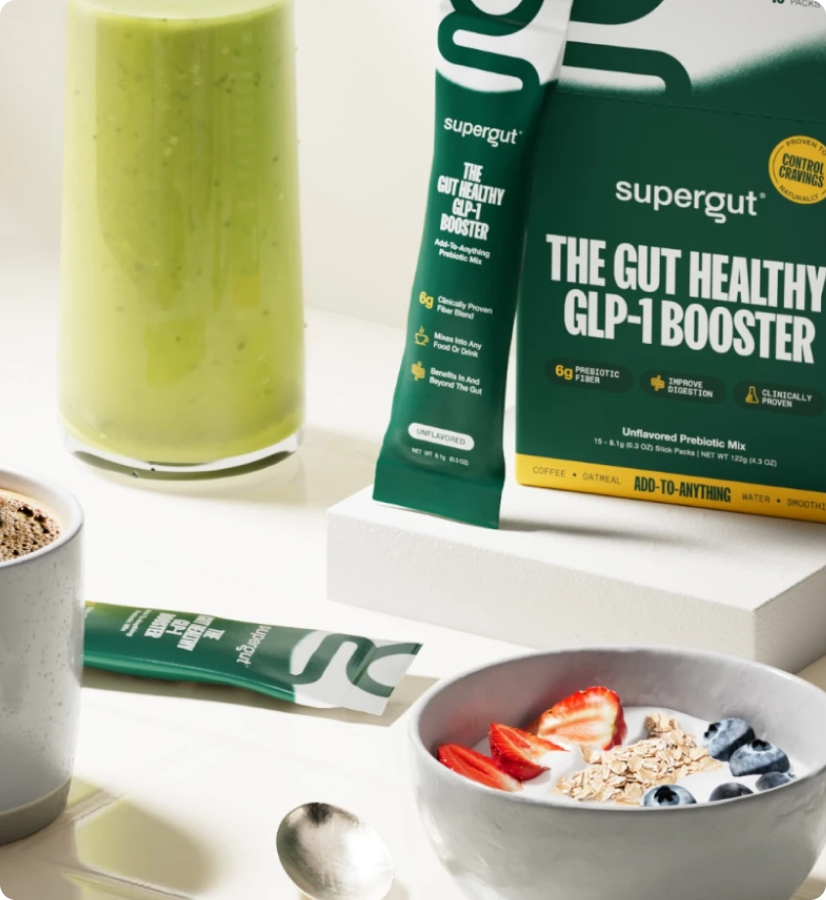GLP-1 Foods: The Next Giant Leap for F&B
How food & beverage brands can win in a changing consumer landscape
Download the report

In this Report:
-
The GLP-1 Consumer Shift: How appetite suppression is reshaping, not eliminating, food demand
-
The Rise of Functional F&B: Why high-protein, fiber-rich, and sugar-free foods are surging
-
Key Growth Areas: The surprising return of carbs and the boom in functional snackingActionable
-
Strategies for Brands: How to reformulate, reposition, and own the GLP-1-friendly spac

Consumer behavior is shifting, are you ready?
- The latest research shows a dramatic change in how people are eating, taking medications, and managing blood sugar. GLP-1 foods are helping consumers feel full and stay satisfied for longer, reshaping the modern diet.
- GLP-1 users spend 6% less on groceries but prioritize high-protein, fiber-rich, and sugar-free foods. The research highlights that healthy eating is now guided by food choices that promote weight management, reduce disease risk, and support balanced blood sugar.
- Traditional snacking is fading while functional snacks and beverages are increasing in popularity. Carbs are making a comeback with bagels (+216% YoY) and tortillas (+212% YoY) trending among GLP-1 foods.
- Sugar-free demand is up (+249% YoY) as consumers look for healthier alternatives. Protein shakes (+95% YoY) and fiber-rich smoothies (+54% YoY) are replacing traditional snacks. Diet changes now focus on whole grains, vegetables, and fruits that supply soluble fiber and healthy fats like olive oil and fish. These dietary sources support gut health, lower blood sugar, and improve insulin response.
- Functional foods that support satiety, metabolism, and digestion are winning among people managing diabetes and type 2 health conditions. Research also links GLP-1 hormone responses to short-chain fatty acids and dietary fiber intake, highlighting new opportunities for innovation.

New Growth Areas for Food & Beverage

How Brands Can Stay Ahead
- Consumers are eating differently due to the popularity of weight loss drugs like Ozempic and Wegovy. These medications influence appetite, blood sugar levels, and body weight, driving a rise in GLP-1 foods that help people manage blood sugar and maintain healthy habits.
- Food brands can help consumers make better food choices by promoting balanced diets that include whole grains, vegetables, fruits, and healthy fats. Including fiber and protein-rich ingredients supports weight management and overall health.
Strategies to Win in the GLP-1 Food Revolution
Reformulate & Reposition: Highlight satiety, gut health, and functional benefits supported by dietary research. Offer GLP-1-friendly products with ingredients that increase insulin response, improve digestion, and help consumers feel full.
Capitalize on New Demand: Focus on functional and convenient meal solutions that include sources like fiber, fish, eggs, and whole grains. These foods help lower blood sugar, support hormone balance, and improve body weight control.
Own the Recipe Space: GLP-1-friendly recipes that use fruits and vegetables, olive oil, and soluble fiber can help increase GLP-1 hormone activity. Promote foods to add to a healthy diet and emphasize the role of fatty acids and protein in maintaining energy and reducing side effects.
Key trends shaping GLP-1 foods:
- Increase in dietary protein and fiber consumption
- Greater awareness of insulin and glucose effects
- Stronger preference for foods that lower blood sugar naturally
- More information shared in health news and media channels
By creating informed food choices and offering guidance on how GLP-1 foods can help manage blood sugar, brands can position themselves as leaders in the next wave of F&B innovation.
FAQs about GLP-1
GLP-1 medications such as Ozempic and Wegovy work by mimicking the glucagon-like peptide hormone that influences appetite and digestion. This can change how people are eating, making them feel full faster and helping them eat smaller portions. The effects on the stomach help slow digestion, which can support weight management and stabilize blood sugar levels over time.
Recent research shows that GLP-1 foods can help people with type 2 diabetes improve blood sugar control and insulin response. The combination of high-fiber ingredients, healthy fats, and whole grains can lower blood sugar and support overall health. Dietary studies also indicate that GLP-1 foods help reduce disease risk and promote long-term metabolic balance.
When taking GLP-1 medications, it’s best to eat balanced meals rich in protein, fiber, and healthy fats. Choose dietary sources like fish, eggs, vegetables, and fruits to support digestion and maintain stable sugar levels. Avoid high-sugar snacks, and focus on foods that promote gut health and satiety. These food choices can help increase energy, improve stomach comfort, and support the positive effects of GLP-1 therapy.